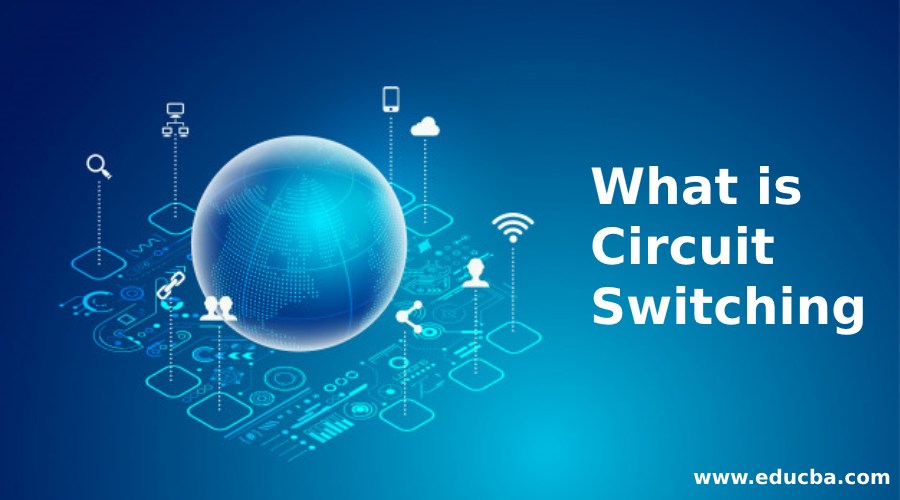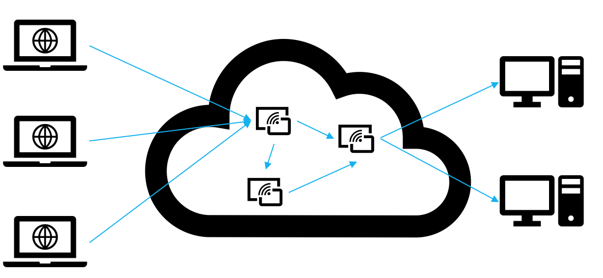Updated June 9, 2023

Introduction to Circuit Switching
In this modern world, we love to be connected, be it over the internet, like usage of social websites like Facebook, Twitter, Instagram etc. or be it by mobile or telephone. As a result of this huge demand of keeping ourselves connected, the topic of network switching has gained a lot of interest. It becomes absolutely necessary for us to be knowledgeable about it. For example, if a phone call is made, a huge amount of data gets transferred over from one network to another. This exchange of information between different network or computers, or devices is known as Circuit switching.
What is Circuit Switching?
Now that we have a fair idea on what circuit switching means in the current industry let us look in depth about the circuit switching methodology and different sections which are a part of this technology and dive deeper into each aspect so as to get a comprehensive clarity on the topic of circuit switching. In circuit switching, an entire end to end connection is created between the source and the receiver in the network before the transfer of any data. In this method, the data rate is fixed, and the subscribers, namely the source and the receiver, needs to operate on this fixed data rate. This is the simplest communication method where there are dedicated physical connections established between the sender and the receiver. This connection is established by a set of physical links connected with each other. Let us look at the picture below and understand the more niche details of circuit switching.
In the above image, we can see that the group on the left-hand side is connected to the Desktop PCs on the right through physical links, which is known as switchers. Now let us think that the mid-section, which is the switchers is not present. In that case, we would need to point to point connections between each of the computers on the left-hand side to the ones on the right-hand side PCs, which would have led to a lot of dedicated line connection leading to high connection cost. And not only this, we would have high complexity of the system as well.
In the case of circuit switching, the path through which the data will flow is based on the first established route between the sender and the receiver. Once the dedicated path is established, the data flows continuously through that route, and this dedicated route is built till the end of the conversation.
Phases of Circuit Switching
Now that we have understood what circuit switching is in details, let look at the phases this route goes through while transferring the data. There are three phases which the data goes through, and we would look next on what formation is maintained from start to end of the conversation.
1.The First Phase
In the first phase, the dedicated routing system, or in other words, may call it the connection path, is established between the sender and the receiver. For this connection to be created, one needs to have few mandatory requirements like source and the destination address, and once the mandatory requirements are present, the connection is established in physical layers.
2.The Second Phase
Now once the connection is established, this connection which is physical and dedicated, would stay permanent for the rest of the conversation. In this phase, there is no addressing method involved. In this phase, the switches would use a time slot (TDM) or the occupied band (FDM) for routing the data from the sender to the receiver. The data which has been sent is continuous, although there might be some intermittent periods of silence during the data transmission.
3.The Third Phase
This is the final phase of the circuit switching method and is the circuit disconnect phase. This gets initiated if the sender or the receiver needs to disconnect the path. The disconnect signal is sent to all the switches involved in the circuit, where it is commanded to release the resources involved in this connection and break the connection present.
Advantages and Disadvantages of Circuit Switching
Now that we have understood the intricacies of circuit switching, we must also know about the advantages and disadvantages that come with this technique.
Advantages
Let us first look at the advantages:
- The data rate is fixed, and the connection established is dedicated established by dedicated physical connection or circuits; hence there is no problem of intermittent resource unavailability.
- The option of a dedicated connection also enables smooth data transmission over the physical lines for a longer period of time.
- The delay involved in data transmission is negligible as there is no waiting time involved in the case of switches. So, the data would start flowing without any prior delay in the transmission.
Disadvantages
Subsequently, we would look at the disadvantages as we proceed forward.
- There are disadvantages along its way with the advantages of a dedicated physical path as the channel can’t be used for any other data transmission, even if busy or free.
- In the case of the silence period, the dedicated established connection would face wastage of bandwidth.
- The time involved in the establishment of a connection between the sender and the receiver is huge, and thus frequent connection and break of connection are vastly avoided.
Conclusion
Now that we have comprehensive knowledge about circuit switching, we would like to sum up the main points we encountered during this course. The circuit switching offers a great technique in breaking down the network resources into smaller pieces for optimized data transfer utilisation and is made sure that a constant data rate is maintained for uninterrupted data transfer. This technique is also vastly used in telephone connections. Lastly, in the techniques talked about earlier (FDM and TDM), the FDM technique uses the bands division and vastly used in the transmission of multiple data signals combined, and TDM uses the concept of frames division.
Recommended Articles
This is a guide to What is Circuit Switching. Here we discuss an introduction to Circuit Switching, with the three phases, advantages and disadvantages. You can also go through our other related articles to learn more –


